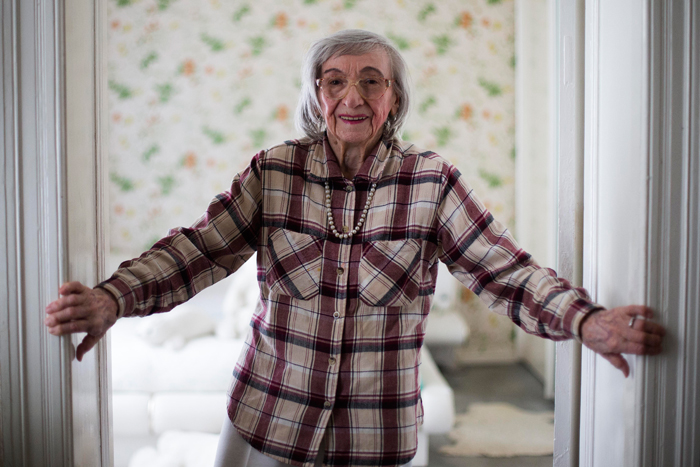
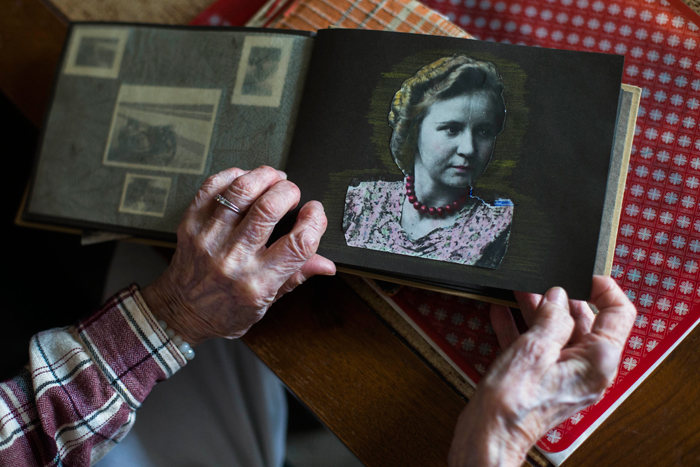
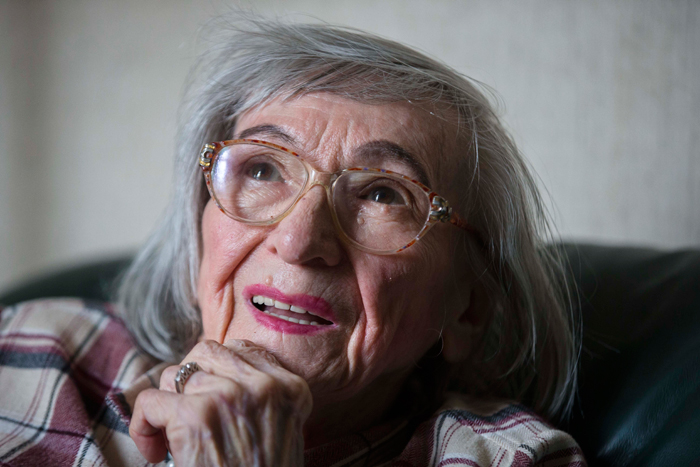
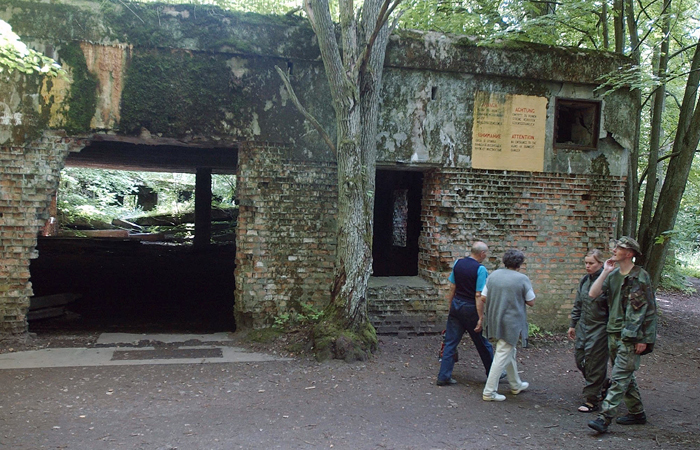
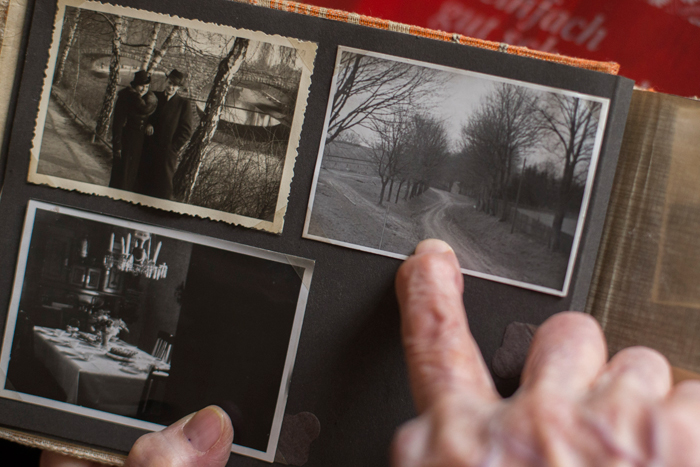
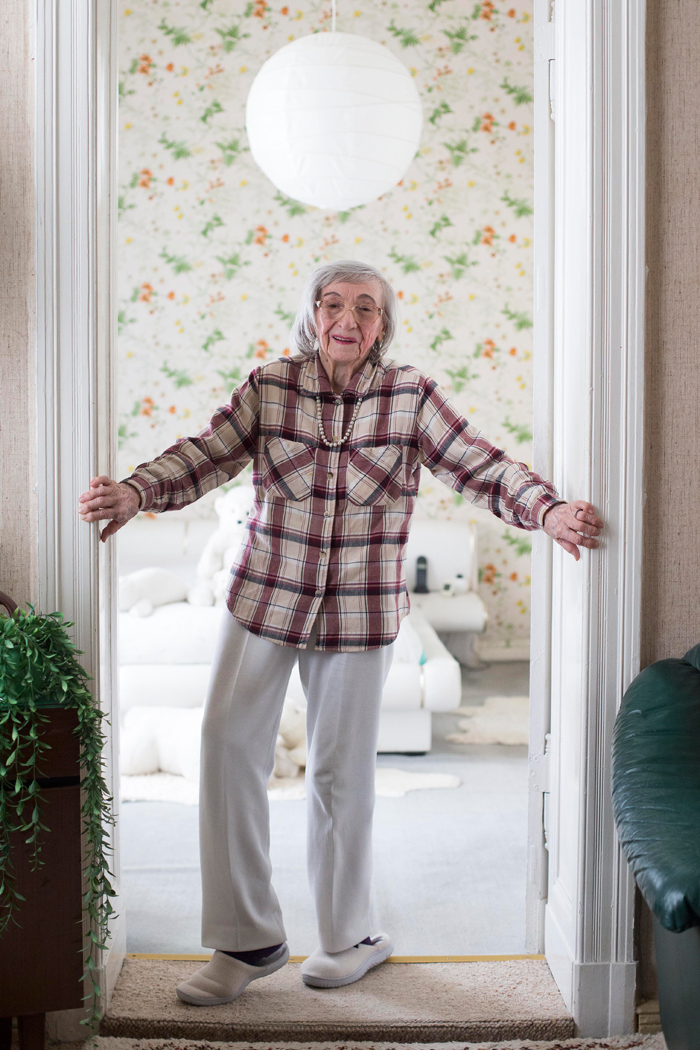
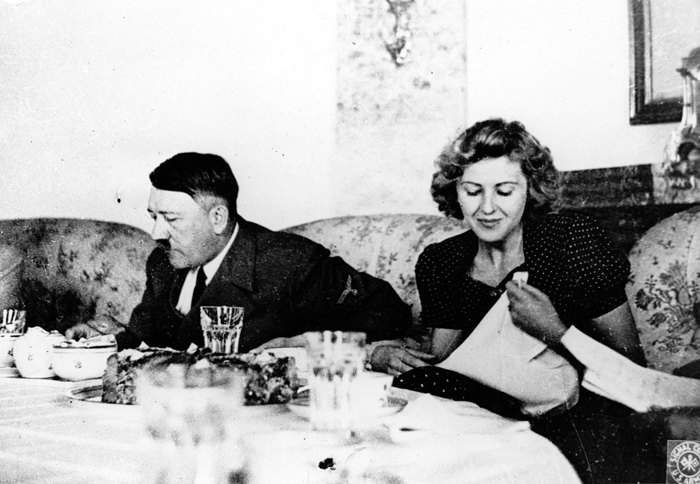
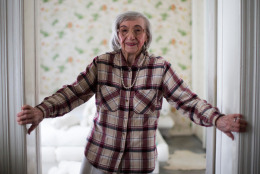
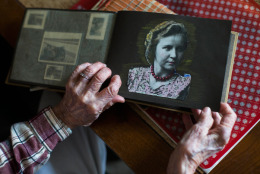
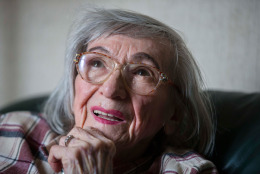
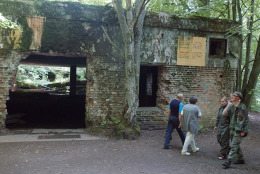
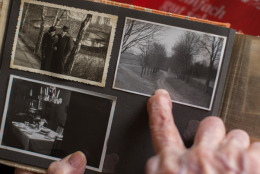
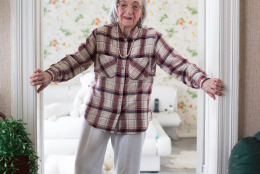
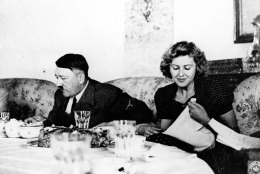
By KIRSTEN GRIESHABER
Associated Press
BERLIN (AP) – They were feasts of sublime asparagus – laced with fear. And for more than half a century, Margot Woelk kept her secret hidden from the world, even from her husband. Then, a few months after her 95th birthday, she revealed the truth about her wartime role: Adolf Hitler’s food taster.
Woelk, then in her mid-twenties, spent two and a half years as one of 15 young women who sampled Hitler’s food to make sure it wasn’t poisoned before it was served to the Nazi leader in his “Wolf’s Lair,” the heavily guarded command center in what is now Poland, where he spent much of his time in the final years of World War II.
“He was a vegetarian. He never ate any meat during the entire time I was there,” Woelk said of the Nazi leader. “And Hitler was so paranoid that the British would poison him – that’s why he had 15 girls taste the food before he ate it himself.”
With many Germans contending with food shortages and a bland diet as the war dragged on, sampling Hitler’s food had its advantages.
“The food was delicious, only the best vegetables, asparagus, bell peppers, everything you can imagine. And always with a side of rice or pasta,” she recalled. “But this constant fear – we knew of all those poisoning rumors and could never enjoy the food. Every day we feared it was going to be our last meal.”
The petite widow’s story is a tale of the horror, pain and dislocation endured by people of all sides who survived World War II.
Only now in the sunset of her life has she been willing to relate her experiences, which she had buried because of shame and the fear of prosecution for having worked with the Nazis, although she insists she was never a party member. She told her story to The Associated Press as she flipped through a photo album with pictures of her as a young woman, in the same Berlin apartment where she was born in 1917.
Woelk says her association with Hitler began after she fled Berlin to escape Allied air attacks. With her husband gone and serving in the German army, she moved in with relatives about 435 miles (700 kilometers) to the east in Rastenburg, then part of Germany; now it is Ketrzyn, in what became Poland after the war.
There she was drafted into civilian service and assigned for the next two and a half years as a food taster and kitchen bookkeeper at the Wolf’s Lair complex, located a few miles (kilometers) outside the town. Hitler was secretive, even in the relative safety of his headquarters, that she never saw him in person – only his German shepherd Blondie and his SS guards, who chatted with the women.
Hitler’s security fears were not unfounded. On July 20, 1944, a trusted colonel detonated a bomb in the Wolf’s Lair in an attempt to kill Hitler. He survived, but nearly 5,000 people were executed following the assassination attempt, including the bomber.
“We were sitting on wooden benches when we heard and felt an incredible big bang,” she said of the 1944 bombing. “We fell off the benches, and I heard someone shouting `Hitler is dead!’ But he wasn’t. ”
Following the blast, tension rose around the headquarters. Woelk said the Nazis ordered her to leave her relatives’ home and move into an abandoned school closer to the compound.
With the Soviet army on the offensive and the war going badly for Germany, one of her SS friends advised her to leave the Wolf’s Lair.
She said she returned by train to Berlin and went into hiding.
Woelk said the other women on the food tasting team decided to remain in Rastenburg since their families were all there and it was their home.
“Later, I found out that the Russians shot all of the 14 other girls,” she said. It was after Soviet troops overran the headquarters in January 1945.
When she returned to Berlin, she found a city facing complete destruction. Round-the-clock bombing by U.S. and British planes was grinding the city center to rubble.
On April 20, 1945, Soviet artillery began shelling the outskirts of Berlin and ground forces pushed through toward the heart of the capital against strong resistance by die-hard SS and Hitler Youth fighters.
After about two weeks of heavy fighting, the city surrendered on May 2 – after Hitler, who had abandoned the Wolf’s Lair about five months before, had committed suicide. His successor surrendered a week later, ending the war in Europe.
For many Berlin civilians – their homes destroyed, family members missing or dead and food almost gone – the horror did not end with capitulation.
“The Russians then came to Berlin and got me, too,” Woelk said. “They took me to a doctor’s apartment and raped me for 14 consecutive days. That’s why I could never have children. They destroyed everything.”
The Associated Press does not routinely identify people who say they were sexually assaulted unless they agree to be named.
Like millions of Germans and other Europeans, Woelk began rebuilding her life and trying to forget as best she could her bitter memories and the shame of her association with a criminal regime that had destroyed much of Europe.
She worked in a variety of jobs, mostly as a secretary or administrative assistant. Her husband returned from the war but died 23 years ago, she said.
With the frailty of advanced age and the lack of an elevator in her building, she has not left her apartment for the past eight years. Nurses visit several times a day, and a niece stops by frequently, she said.
Now at the end of her life, she feels the need to purge the memories by talking about her story.
“For decades, I tried to shake off those memories,” she said. “But they always came back to haunt me at night.”
Copyright 2013 The Associated Press. All rights reserved. This material may not be published, broadcast, rewritten or redistributed.







